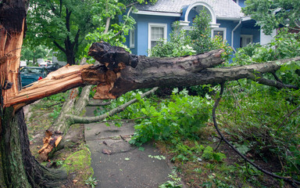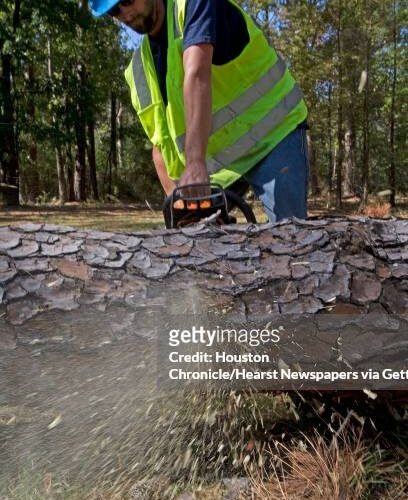From a sudden tornado to a wintry blizzard, storm damage can quickly turn into disaster. The first thing to remember is that your safety should be the highest priority.
If you are safe, inspect your property after a storm, call PRV Tree Service and take pictures for your homeowner’s insurance provider.

Strong winds can uproot trees and damage structures like roofs during most storms. They can also tear off shingles and even destroy a whole house. When wind damages a home or business, the owners must survey the damage and file insurance claims for repair costs. It is also important for local governments, school systems, and other municipal bodies to understand the types of storm damage they may face so they can plan accordingly.
The most common type of wind damage is flying debris. When winds reach about 25 mph, debris can be blown around and cause hazards for drivers. This is when many power lines begin to sway, and people should stay inside their homes or businesses.
If a building has sustained structural damage from wind forces, entering and exploring the interior can be dangerous. This is why having an experienced restoration company inspect the property after the storm is a good idea. Once the professionals assess the damage, they can help the property owner determine if the home or business is safe to inhabit after storm damage restoration.
Aside from the physical hazards created by falling branches and torn-down power lines, heavy winds can also create health and safety issues. In some cases, a collapsed roof or damaged chimney could harbor hazardous materials, which can leak into the living space and cause other problems. In addition, if you suspect that the storm has impacted a gas line, you should never approach it until a safety expert clears you to do so.
When checking for storm damage, it’s important to remember that high winds can shatter windows and doors, leaving shards of glass throughout the property. It would be best to watch for dings, dents, cracks, splinters, and other damage to the siding, paint, bricks, or other exterior surfaces of buildings.
Rain damage is caused by the accumulation of water on a property. This can cause flooding, property erosion, and other problems. Rainstorms can also cause storm damage, such as lightning, high winds, and tornadoes. Knowing how to recognize and prevent this type of storm damage is important.
Heavy rains can damage homes and other structures by leaking into them, especially if the home is not properly sealed. This can lead to rotting, rust, and mold. It can prevent rain damage by ensuring proper gutters and downspouts on the roof and sealing outdoor areas. In addition, it is important to ensure that the windows and doors are properly closed.
This is particularly true for older houses and those with flat roofs. Rainwater can seep into the walls and ceilings of homes, causing extensive and costly damage. It can damage a house’s foundation and ruin interior and exterior surfaces. It is important to repair any damage caused by rain, especially if it is severe.
Homeowners insurance typically covers rain damage, but only if the damages occurred as a direct result of the storm. For example, if a homeowner notices mold on their upstairs ceiling after a rainstorm, their insurance may cover the costs of professional cleaning and remediation services. In addition, vandalism and theft are often covered by homeowner’s insurance policies. It is important to assess the damage after a storm to ensure it is safe to enter the building. This is especially important if there are downed power lines or other hazards. If you must walk through a damaged area, wear long pants, a long-sleeved shirt, and sturdy shoes.
Hail is a freezing precipitation that forms in the updrafts of strong thunderstorms. It can reach diameters of up to 15 cm (6 inches).
Hails are classified as ice pellets (sleet) and hailstones when they have a size greater than 5 mm (0.20 in). The METAR reporting code for hail 5 mm or larger is GR, while smaller hail and sleet are coded GS. Hailstones typically are smooth but may have spiked or bumpy surfaces, indicating that they underwent wet growth in the updraft of the storm cloud.
Like all water ice forms, hail can destroy crops and damage poorly designed or constructed structures. It can also cause severe injuries to people and animals struck by it, especially if the hail is very large.
When hail is forecast, a warning is issued for the affected area in many areas. This is because hail can significantly damage buildings, crops, and automobiles. Hail is often accompanied by high winds and lightning, which can cause major destruction.
When a hail threat is present, staying indoors and away from windows is best. If you must be outdoors, move into a garage or other building with sturdy walls. If you are in your car, cover yourself with blankets to protect yourself from shattering glass. If you must drive, slow down and be extra careful, as cracked windshields can become projectiles that can injure you or other drivers.
Lightning strikes are the second most common cause of weather-related deaths. Lightning usually occurs between positive and negative charge regions within a storm cloud. This causes a lightning strike, which often looks like a bright flash that flickers. The chances of being struck by lightning are higher when you’re near tall objects.
The most dangerous time outdoors is just before a storm starts and when it’s departing. Most lightning deaths occur because people do not seek shelter or stop outdoor activities quickly enough.
A lightning strike can cause fire damage to trees, buildings, and power lines. It can also lead to injuries and cardiac arrests. Survivors of lightning strikes may suffer from movement disorders, permanent neurological damage, and ruptured eardrums. In addition, they can experience various long-term cognitive problems, including depression, memory loss, and trouble processing new information or retrieving old information.
When lightning hits a tree, it turns the wood to steam. This can blast away bark char branches and kill the tree. Lightning also carries an electric current down the tree trunk and into the roots. The current can then jump from the roots to nearby trees or buildings. These lightning strikes are called side flashes, and they’re the main reason that standing under a tree or any other tall object during a thunderstorm is a very dangerous activity.
Lightning can also travel through metal wires and pipes inside homes and buildings. It can cause electrical and plumbing damage, heat up, and potentially melt concrete walls or floors. Lightning can also create a shock wave that can crack or break windows and doors.
Tornadoes are whirling, funnel-shaped clouds that extend from thunderstorms to the ground, causing deadly winds with a speed that can exceed 300 miles per hour. The tornadoes can leave behind damaged buildings, uprooted trees, and tossed cars. The force of a tornado is so great that it can pick up and carry away entire houses.
The National Weather Service has created an Enhanced Fujita scale that considers 28 damage indicators to rate a tornado’s strength rather than just its wind speeds. Weak tornadoes last less than 10 minutes have winds up to 100 mph, and mostly cause broken branches and roof damage. Two-thirds of all tornadoes are invalid. Strong tornadoes can last for 20 minutes or more, have winds of up to 205 mph, and are strong enough to destroy mobile homes, overturn trains, and tear off the roofs of some buildings.
Everyone should have a disaster plan and know where to shelter in a tornado. A basement offers the best protection. If unavailable, get to a room on the lowest level away from windows, and crouch down, covering your head with your hands.
